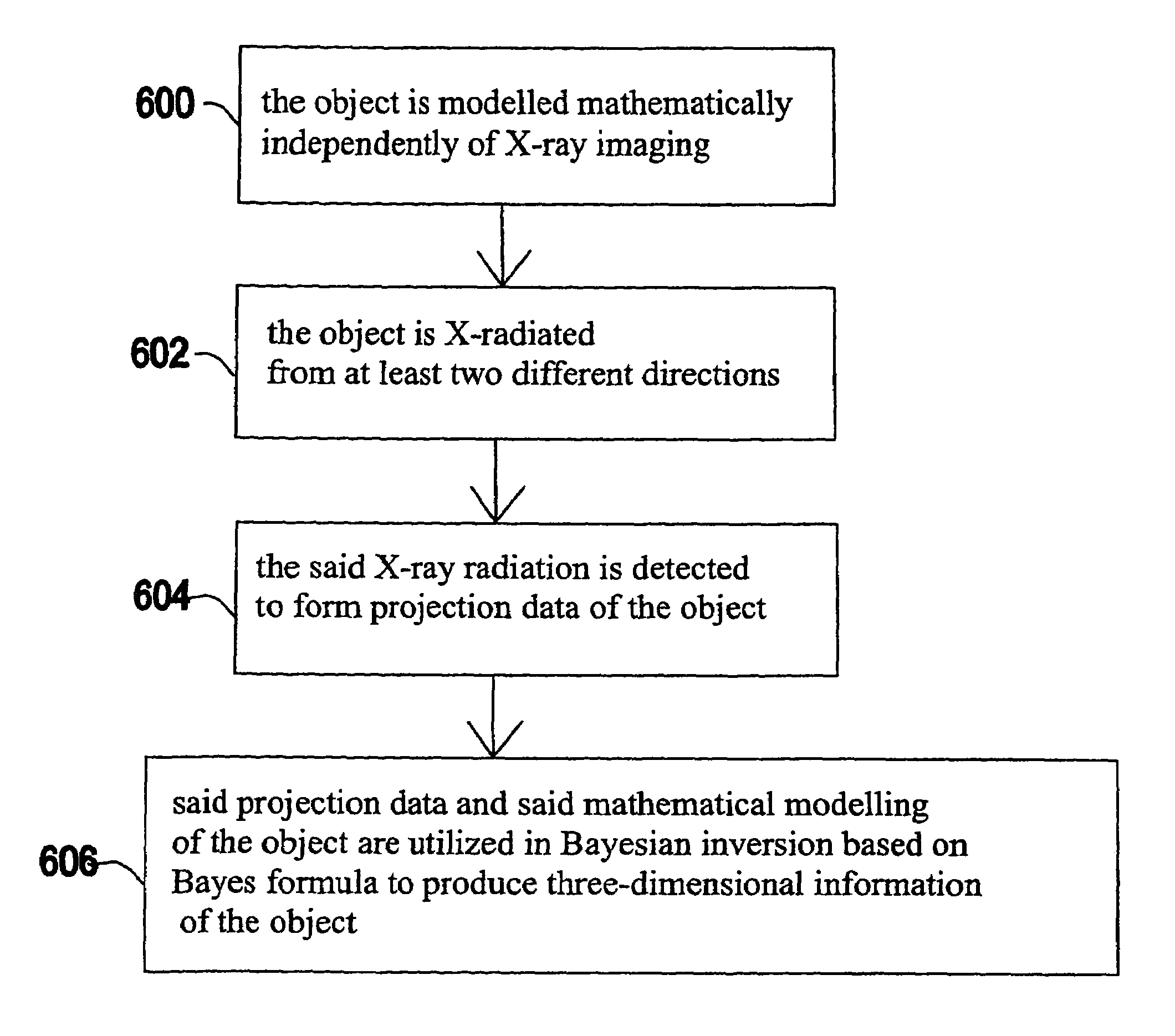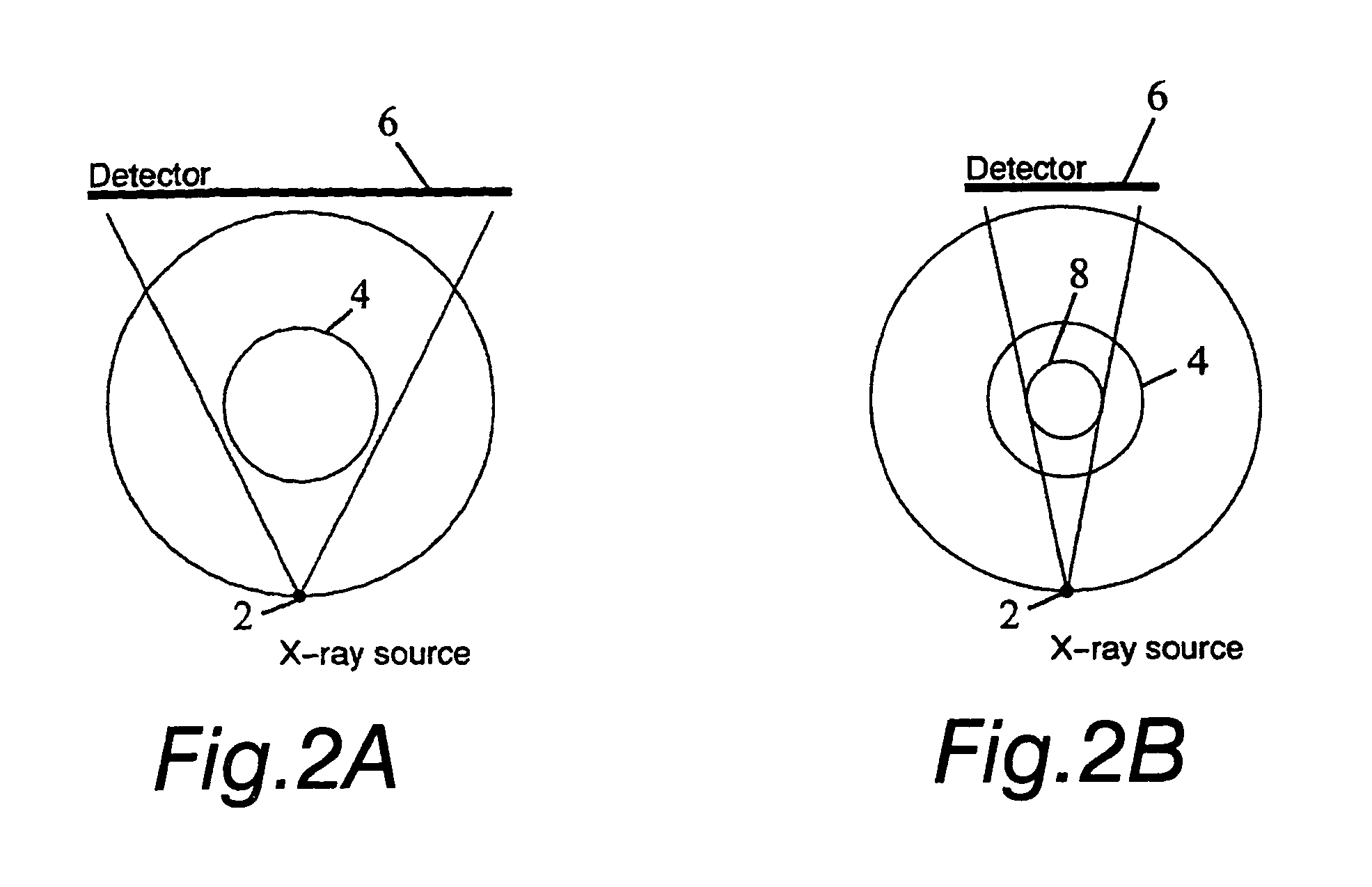Method and arrangement for medical X-ray imaging
a technology of x-ray imaging and x-ray images, applied in the field of medical x-ray imaging, can solve the problems of insufficient information in the sparse projection data to fully describe the 3-d body, difficult to use a priori information, and insufficient information in the sparse projection data
- Summary
- Abstract
- Description
- Claims
- Application Information
AI Technical Summary
Benefits of technology
Problems solved by technology
Method used
Image
Examples
Embodiment Construction
[0029]In conventional tomography, the interior of an object is reconstructed from tomographic projections such as X-ray images. All the current image reconstruction methods assume that projection geometry of the imaging device is either known or solved in advance by using fiducial or non-fiducial feature points in the images. With this invention a novel approach is presented where the imaging geometry is solved with the reconstruction problem while no correspondence information is needed. This approach is a direct application of Bayesian inversion theory and produces the maximum likelihood or maximum a posteriori estimates for the imaging geometry like motion parameters under the selected noise and prior distributions. This invention can be utilized assuming either 1D or 2D projections. To utilize the invention with 1D projections is also often a sufficient assumption since the reconstruction problem is frequently performed as a stack of 2D reconstruction problems for computational ...
PUM
| Property | Measurement | Unit |
|---|---|---|
| size | aaaaa | aaaaa |
| total opening angle | aaaaa | aaaaa |
| imaging | aaaaa | aaaaa |
Abstract
Description
Claims
Application Information
 Login to View More
Login to View More - R&D
- Intellectual Property
- Life Sciences
- Materials
- Tech Scout
- Unparalleled Data Quality
- Higher Quality Content
- 60% Fewer Hallucinations
Browse by: Latest US Patents, China's latest patents, Technical Efficacy Thesaurus, Application Domain, Technology Topic, Popular Technical Reports.
© 2025 PatSnap. All rights reserved.Legal|Privacy policy|Modern Slavery Act Transparency Statement|Sitemap|About US| Contact US: help@patsnap.com



